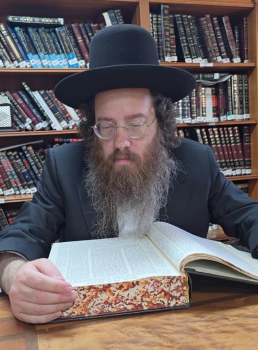Which mezuzah should we affix in a building where both Ashkenazim and Sephardim live
Question
There are several families living in the same building, some of them Ashkenazi and some of them Sephardic, and there is a dispute about which mezuzah to affix in the entrance to the building. Everyone wants to hang a mezuzah in the entrance of the building according to his custom. We thought of a solution to hang two mezuzahs, one Ashkenazi and one Sephardic, within the same mezuzah case. Is it permissible to do so?
Answer
It is not possible to place two mezuzot on the same doorpost, due to the prohibition of adding. And since a person of Ashkenazi origin does not fulfill his obligation by using a mezuzah with Sephardi script, but a person of Sephardic origin does fulfill his obligation with an Ashkenazi-style mezuzah, provided that open and closed paragraphs are written according to the opinion of the Rambam, this is the type of mezuzah you should use, and then everyone will fulfill his obligation. “You shall love truth and peace.”
Source
Pischei Teshuvah, Yoreh Deah, ch. 291, subsection 2 writes in the name of the Chamudei Daniel that if it is difficult for someone to remove the mezuzah from the doorpost and he wishes to place another mezuzah there, it is forbidden to do so due to the prohibition of "Lo Tosef" (adding) and furthermore, it is forbidden to place two mezuzot in one entrance. Regarding the kashrut of a Sephardic mezuzah for Ashkenazim, in the Mishnah Berurah (Chapter 36 - "Tzurah HaOtiyot") it is written regarding the letter "Nun" whose head is in the shape of a "Vav" and not in the shape of a "Zayin", and similarly regarding the letter "Shin" that has a “seat” (a horizontal line at the bottom), that they are invalid because "Pri Megadim" remaining in doubt regarding their kashrut. And since in the Sephardi writing they write the head of the "Nun" as a "Vav" and not as a "Zayin", and similarly they write the letter "Shin" with a "seat", according to the Mishnah Berurah one should not use this writing. As for an Ashkenazi mezuzah for a Sephardi, according to the Shulchan Aruch, in Chapter 32, §36 subsection 4, one should not leave a space at the end of the Parsha of Shema. And in the Parsha of “V'Hayah Im Shemoa”, they begin in the middle of the line and before it leave a space of nine letters. And thus is the custom of the Eastern communities. And this is the ruling of the Beit Yosef in chapter 32. The opinion of Turei Zahav is to leave a space of less than nine letters at the end of “Shema,” and similarly at the beginning of “V'Hayah Im Shmoa,” so that when the two whitespaces are combined there will be the space of nine letters overall. And thus ruled the Mishnah Berurah and thus is the custom of the Ashkenazim; but certainly one fulfills his obligation with a mezuzah, which is written according to the opinion of the Rambam.
